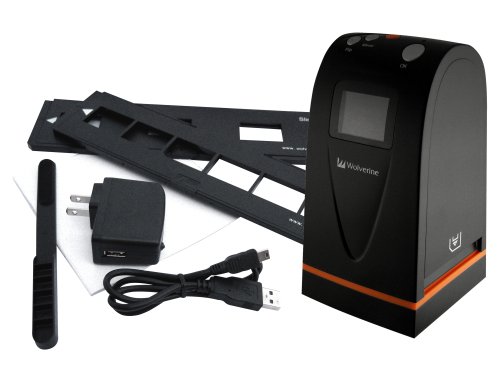
How Do Hobby Film Scanners Differ from Professional-Grade Scanners? Videos can be saved onto the SD card or transferred to a computer.

The scanner converts 3", 5", and 7" reels of 8mm film into digital files. You can adjust brightness, sharpness, and framing.

This easy-to-use device allows for multiple viewing options and requires no computer or external software. The device features a 3.6D high dynamic range and powerful software. It automatically corrects scratches and lightens ultra-dark shadow areas, which makes this product especially well-suited for black-and-white film. This high-performance scanner supports a broad range of film and image types. It is energy-efficient and no warm-up time is needed. It removes the appearance of dust and scratches from film, easily restores faded colors, scans slides, negatives, and medium-format panoramic film.

It features a 3.5" LCD screen, intuitive interface, and multiple options for device pairing and digitized scan sharing.Ī popular choice of photographers, it allows for creating enlargements up to 17” x 22”. While being low-cost, the scanner is made by a trusted brand. It handles 35mm, 126, 11, Super 8, 8mm negatives. This versatile device converts both negatives and slides to digital files. The Plustek OpticFilm 8100 can handle different slide types because of the built-in ICC profile and is ideal for scanning black-and-white film. Besides, this is an energy-efficient option. The Epson Perfection V600 effectively removes imperfections from scanned photos, allows for enlargements from film, and restores faded colors. These models have their peculiarities, too.
#Help for wolverine 35mm film to digital converter professional
On the other hand, there are pricier scanners about $400 like Plustek and Epson that are designed for professional photographers. With a price of under $200, it is user-friendly, easy-to-use, and comes with a display.
An excellent example is the KODAK SCANZA scanner, which is a good choice for in-home use and hobbyists.


 0 kommentar(er)
0 kommentar(er)
